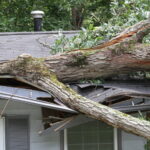When severe weather looms, understanding flood insurance becomes essential for protecting your home and finances. You might think your homeowner’s policy covers everything, but flood damage usually requires separate insurance. Before the next storm hits, you need to grasp how flood zones affect your risk and premiums, and the differences between the National Flood Insurance Program (NFIP) and private options. Have you considered the common exclusions in these policies or how to file a claim effectively? There are crucial details you must know to ensure your home and family are fully protected.
Understanding Flood Zones
When it comes to flood insurance, understanding flood zones is crucial. You need to know that flood zones are geographic areas defined by FEMA based on varying levels of flood risk. These zones influence the type and cost of flood insurance you should consider.
First, familiarize yourself with FEMA’s Flood Insurance Rate Maps (FIRMs). They categorize areas into zones like Zone A, Zone V, and Zone X. Zone A indicates areas with a 1% annual chance of flooding, often called the 100-year floodplain. If you live in Zone A, you face a high risk, and lenders often require flood insurance.
Zone V is for coastal areas with a similar risk but adds waves and storm surge concerns. Zone X, on the other hand, represents areas with minimal flood risk.
Knowing your flood zone helps you assess your property’s vulnerability. It also affects insurance premiums. High-risk zones usually mean higher premiums. But don’t ignore low-risk zones; floods can happen anywhere.
Use FEMA’s online tools or consult local authorities to determine your flood zone. By understanding your flood zone, you can make informed decisions about protecting your home and finances from potential flood damage.
Types of Flood Insurance
Understanding flood zones is just the first step in safeguarding your home; now, let’s explore the different types of flood insurance available. Primarily, flood insurance comes in two main forms: the National Flood Insurance Program (NFIP) policies and private flood insurance.
The NFIP, managed by FEMA, is the most common option and offers coverage for properties in participating communities. These policies are standardized and provide coverage for both the building and its contents, though they must be purchased separately. The NFIP is typically preferred because it’s backed by the federal government, ensuring reliability.
On the other hand, private flood insurance is offered by insurance companies and can provide more flexible options. These policies might offer higher coverage limits and faster claim processing. Private insurers can also tailor policies to better fit your specific needs, which is beneficial if your property has unique features or higher value. Having adequate coverage is essential to cover the costs associated with flood damage. Restoration companies are in high demand following a disaster and often will choose to only work with property owners who are covered.
Choosing between NFIP and private insurance depends on your specific circumstances, such as your location, the value of your home, and personal preferences. Whether you opt for a federal policy or a private one, securing flood insurance is crucial to protect your home from the devastating financial impact of flooding.
Coverage Details
Diving into the specifics of coverage details, it’s essential to know what your flood insurance policy actually protects. Your standard homeowner’s insurance doesn’t cover flood damage, so understanding the specifics of your flood insurance is crucial.
Generally, flood insurance policies cover two main areas: building property and personal property.
Building property coverage protects the physical structure of your home, including the foundation, electrical and plumbing systems, HVAC systems, kitchen appliances, and installed fixtures. Essentially, anything that’s considered part of the building itself falls under this category.
It’s important to check if your policy includes detached structures like garages or sheds, as this can vary.










